Final Solution 03 | The Rwanda genocide killed 1/8 of the country's population in 3 months
event
The Rwandan genocide took place in Rwanda, East Africa. It was a Rwandan genocide by the Hutu people against the Tutsi people. During the 100 days from April 6 to mid-July 1994, about 500,000 of Rwanda's population of more than 7 million were To 1 million people were killed, about one-eighth of Rwanda's total population.
In April 1994, President Juvenal Habyarimana was suspected of being assassinated by the Tutsi, triggering violent conflict in Rwanda. The Hutu began to massacre the Tutsi (including the peaceful Hutu who were killed as traitors). The genocide was orchestrated by the Hutu group Akazu, many of which are senior government leaders.
The Rwandan government, army, officials and local media all supported the massacre. In addition to the army, two Hutu militias were primarily responsible for the massacre: Interahamwe and Impuzamugambi, and a large number of Hutu civilians also participated in the massacre. The ceasefire was terminated and the northern Tutsi Rwandan Patriotic Front resumed its offensive, eventually defeating government forces and taking control of Rwanda. Two million Hutu refugees have fled Rwanda for fear of reprisals from the Tutsi.
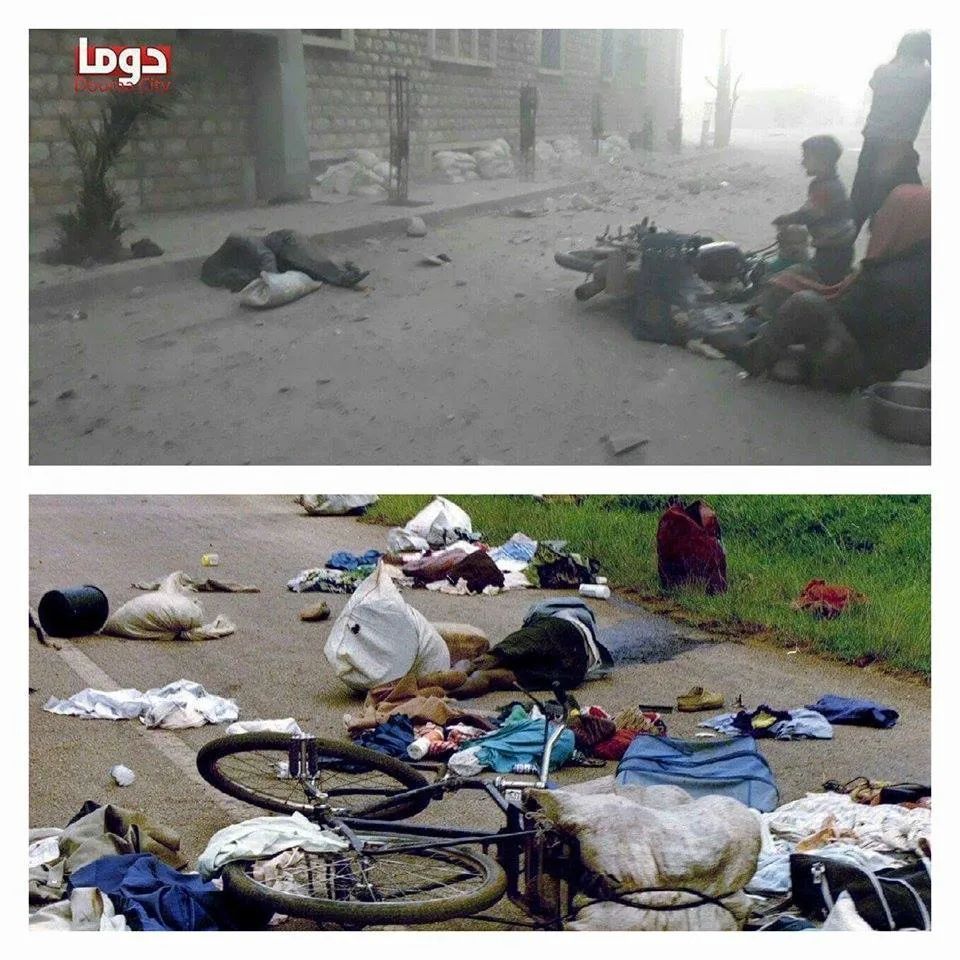
timeline
The proportion of Hutu and Tutsi population is 85% and 14%.
Tutsi (Government) Before the 1960s, only 10% to 15% of the population of the Tutsi dominated Rwanda, and 88% of government officials were Tutsi and owned most of the arable land.
Hutu (government) On July 1, 1962, Rwanda declared independence and established a republic. After independence, the Tutsi and Hutu clashed many times, and the fighting continued. In June 1991, Rwanda implemented a multi-party system. The president was killed, retaliated, and the carnage began.
Tutsi (government) On July 19, 1994, the Patriotic Front achieved a military victory and seized power. After they established a new government, they emphasized "great reconciliation" with the goal of ethnic unity.
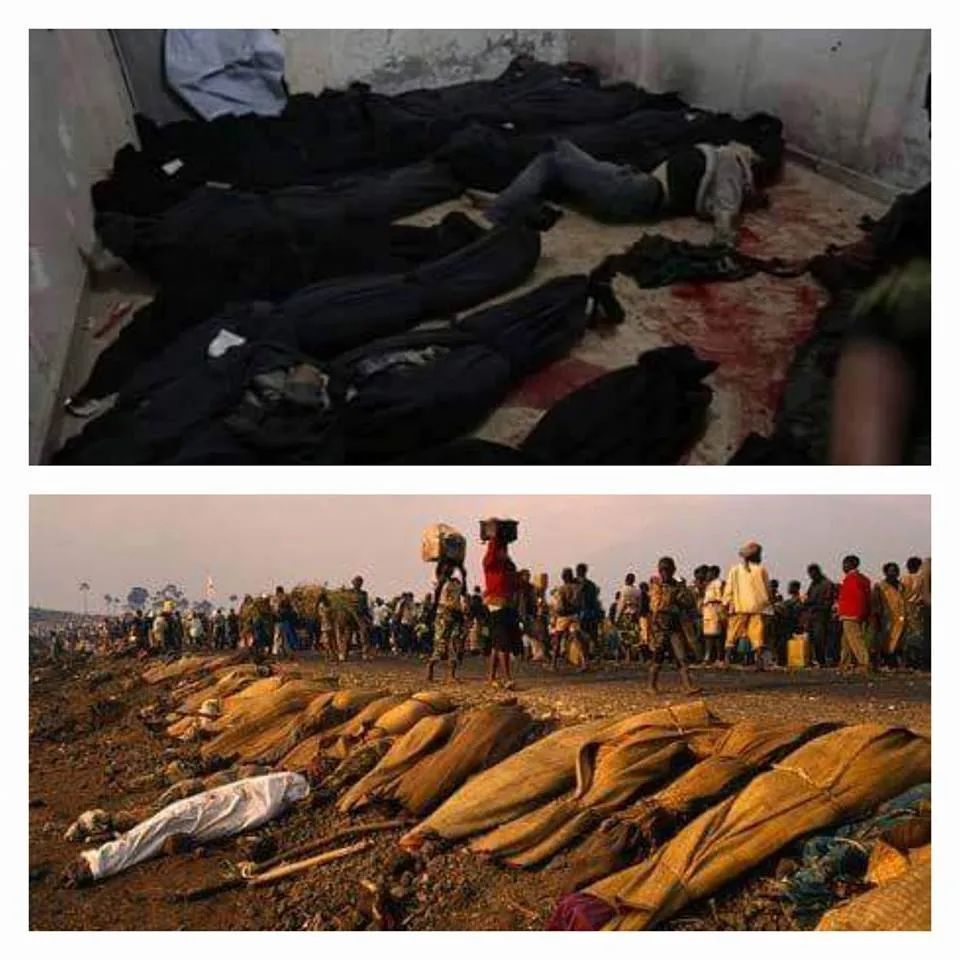
background
Rwanda was a colony of the German Empire from 1890 to 1918 and a colony of the Belgian Colonial Empire from 1918 to 1962. The ethnic minority Tutsi (about 18%) have always ruled the Hutu, who make up about 80% of the population. After the Belgians left, power was returned to the Hutu majority. After Rwanda's independence in 1962, the government also failed to properly deal with the issue of antagonism between ethnic groups. For more than 20 years, the Rwandan government has implemented racially discriminatory policies against the Tutsi.
The Rwandan Civil War was a large-scale civil war that took place in Rwanda from October 1, 1990 to July 8, 1994, between the government-controlled Rwandan Armed Forces and the Rwandan Patriotic Front rebels. The war stemmed from a protracted dispute between the country's two major ethnic groups, the Hutu and Tutsi, and the Rwandan civil war was one of the causes of the Rwandan genocide. The Rwandan Patriotic Front, an anti-government group of Tutsi refugees, attacked northern Rwanda from Uganda in 1990, aiming to overthrow the Hutu-led government. During the civil war in Rwanda, Francophone Africa and France supported the Hutu and Uganda supported the Tutsi. This has heightened inter-ethnic tensions in Rwanda. Buoyed by the Rwandan government-controlled media, many Hutu people became fascinated by an ideology known as "Hutu Power." This ideology asserts that the Tutsi want to enslave the Hutu, so the Hutu should stop the Tutsi riots at any cost.
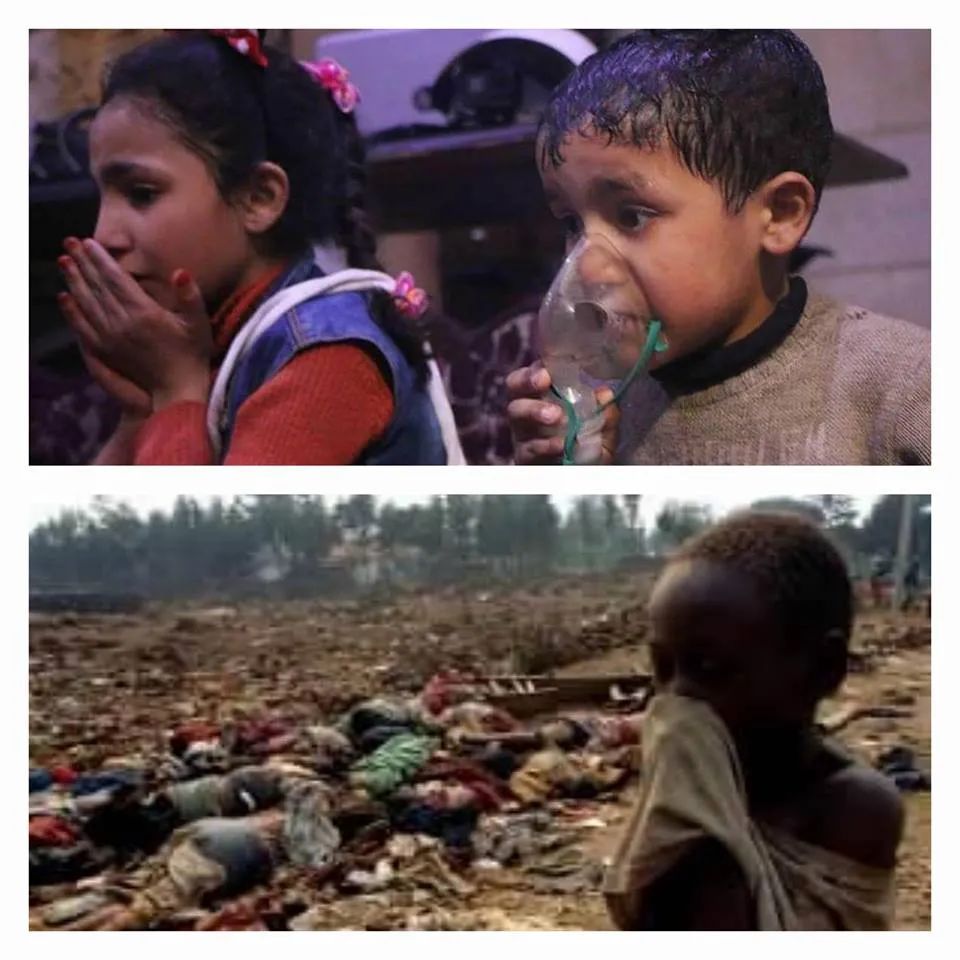
The Rwandan government, led by Hutu Juvenal Habyarimana, was forced to sign a ceasefire agreement in 1993, also known as the Arusha Accords, under international pressure. In the three years before the massacre, the state-controlled media even regarded the Tutsi as the enemy of the state, and vigorously attacked and incited them, causing fear and hatred of the Tutsi. Supporting RTLM radio even went so far as to publicly announce the list of executions nine months before the massacre.
On April 6, 1994, a plane carrying Rwandan President Juvenal Habyarimana and East African country Burundi's President Cyprien Ntariamila was shot down near the Rwandan capital Kigali Both Hutu presidents were killed, and there are rumors that Tutsi guerrillas planned the assassination.
The massacre spread from the capital Kigali to every corner of the country; from April 6 to early July, about 1 million people were massacred, most of them Tutsi, and another 2 million people displaced.

Until late June, neighboring Uganda saw the critical situation, and urgently dispatched troops to join forces with the Rwandan Patriotic Front (RPF) of the Tutsi ethnic group to resist the bloody massacre of the Hutu ethnic group. In July, a counteroffensive entered the Rwandan capital Kigali, defeating the Hutu government. Fearing reprisals, more than 2 million Hutus fled to neighbouring Burundi, Tanzania, Uganda and Say (now the Democratic Republic of Congo), and thousands died in refugee camps from cholera and dysentery.
During the massacre, RTLM radio "aired an almost daily call for people to find and kill the Tutsi who were falsely called cockroaches," according to the BBC.

way of killing
Hutu extremists called a gathering of Interahamwe and Hutu civilians, the commander blamed the Rwandan Patriotic Front (RPF), announced the death of the president, then ordered the masses to "get to work" and "leave no one behind", including baby.
Militia usually kill victims with machetes, although some units use rifles. Hutu gangs searched and massacred victims hiding in church and school buildings.
Rwanda's Presidential Guard has set up roadblocks in the capital, and everyone passing by the roadblocks must show a national ID, which includes ethnicity, and anyone with a Tutsi ID is immediately slaughtered. The militias also began to search houses in the city, massacring Tutsi and looting their property. RTLM radio DJs also broadcast to incite and encourage their Hutu listeners to kill Tutsis. During 1993, machetes were imported on a scale far larger than needed for agriculture, along with other tools that could be used as weapons, such as razors, saws and scissors.
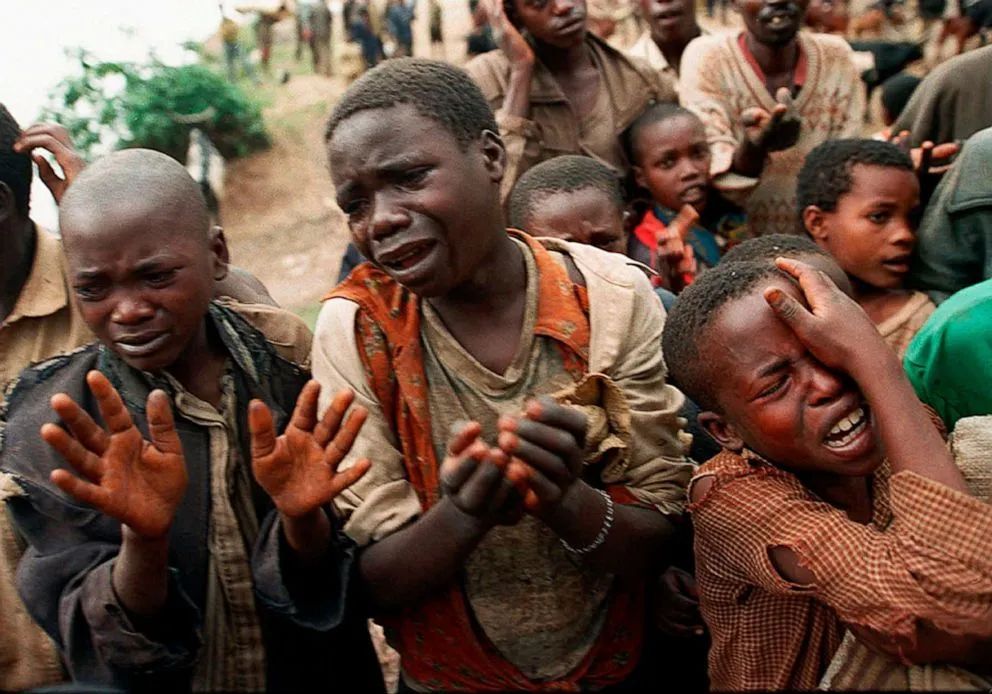
In rural areas, in most cases, the hierarchy of local governments is also the chain of command for the execution of genocide. The governors of each county acted on Kigali's orders, distributing instructions to the commune leaders (Burmest), who in turn issued instructions to the leaders of the various departments, cells and villages within their communes . Most of the actual massacres in rural areas were carried out by ordinary civilians on the orders of the leaders. The Hutus were taught to view the Tutsi as dangerous enemies, a culture of disobedience to authority, and villagers who refused to carry out orders to kill were often labeled as Tutsi sympathizers, and were killed themselves. According to official statistics and surveys by the Rwandan government, 37.9% of the victims of the Rwandan genocide were killed by machetes and 16.8% by sticks.
Rape is used as a tool by the main perpetrators, Inter-Attack, to separate conscious alien populations and drain each other outright. The use of propaganda has played an important role in both genocide and gender-based violence. Hutu propaganda portrays Tutsi women as "a sexually attractive 'fifth column' living with Hutu enemies". The brutality of sexual violence, and the involvement of Hutu women in attacks, shows that the use of propaganda effectively exploits gender needs and mobilizes both men and women. Most Tutsi women were raped by Rwandan Liberation and Rwandan Defence Force soldiers (including the Presidential Guard) and Hutu civilians. Tutsi women have also been attacked to destroy their reproductive capacity. Sexual cutting, which sometimes occurs after rape, involves cutting the vagina with machetes, knives, sharp sticks, boiling water, and acid.

Like Hutu moderates, Hutu women who marry or hide from Tutsi have also been targeted. "Rape is systematic and used as a weapon," said UN Special Rapporteur Rene Degney Sergui. A woman named Marie Louise Niyobuhungiro The testimony recalled that local people, generals, and other Hutu men watched her rape about five times a day. Rape has caused many living Tutsi women to develop AIDS. Hutu extremists released hundreds of AIDS patients from hospitals and formed them into "rape squads". The aim was to infect and cause a "slow, indestructible death" for its future Tutsi rape victims. Research shows that nearly all female survivors over the age of 12 are victims of rape. "Rape is the rule, but no exception," said Rene Degney Sergi, estimating that between 250,000 and 500,000 women and girls were raped. He also found that medics' estimates of one child per 100 rapes did not include murdered women.

follow-up effects
Only more than 300,000 Tutsi survived, leaving 95,000 orphans with unknown surnames. Academics Bijleveld, Morssinkhof and Smeulers estimated that 354,440 women were raped. They examined victims' testimonies and the number of people who were forcibly impregnated; they were then added to the known number of people who were raped but killed. They said: "Almost all the surviving Tutsi women were raped.
The Rwandan civil war and genocide in 1994 brought huge disasters to Rwanda, which made this poor country even worse, lost a large number of laborers, and the national economy was on the verge of collapse. The massacre also brought about great changes in the country's demographic structure. Children under the age of 14 accounted for about 40% of the country's total population . Many women became widows. Hutu extremists who fled to neighboring countries infiltrated into neighboring countries. negatively affect the stability of these countries.

A total of 70,000 people were estimated to have been rescued at the request of the ICRC. After the massacre, tens of thousands of displaced people were aided by the ICRC and the fate of those missing in the Rwandan massacre was clarified through the Restoring Family Links project, where some 48,000 children and their families were reunited between 1994 and 1998. poly.
Today, this special group has grown up. Because they are still young, many orphans in Rwanda do not know anything about their birthdays, names, biological parents, and home addresses. With the help of charities and caring people, some orphans are fortunately integrated into the new extended family. In Rwanda, some charitable organizations imitated foreign mutual aid models and established charitable venues such as "youth villages" to accommodate orphans. Some families in the villages have more than ten children, and they call their adoptive parents "father and mother". Under the mutual comfort of "brothers and sisters", they warm up in a group. Some orphans have gradually come out of the haze and established a positive life goal: to become "people who are beneficial to society".

international response
As early as January 11, 1994, three months before the massacre, Dallaire, the commander of the United Nations Assistance Mission in Rwanda, had a hunch that the massacre might happen, and issued a warning to the UN Peacekeeping Operations Department, hoping that the peacekeeping force would intervene and capture Hutu. Weapons of ethnic militiamen. However, the request was ignored by the UN peacekeeping force on the grounds of "overreaching".
The United States did not want to intervene in the Rwandan civil war because of the unexpected "Black Hawk Incident" when the United States was conducting military operations in Somalia. US President Bill Clinton tactfully expressed his apology when addressing Holocaust survivors at Kigali Airport during his visit to Rwanda in March 1998.
The Belgian government withdrew all its troops in Rwanda and took away all weapons, citing the killing of 10 Belgian peacekeepers.
Roger Winter, director of the American Refugee Council, had an op-ed about the Rwandan genocide that was rejected by major American media and was finally published in The Globe and Mail in Toronto on April 14, 1994.

The United Nations was negative in the Rwanda genocide. On the fourth day of the massacre, the UN Security Council voted to retain a symbolic 260 peacekeepers in Rwanda, whose duty is only to mediate a ceasefire and provide humanitarian aid. Nearly a month and a half after the Rwandan genocide continued, the United Nations decided to increase the number of UN Assistance Missions in Rwanda to 5,500, expand its operational mandate and persuade other countries to join in the rescue.
U.S. Secretary of State Christopher decided not to use the term "genocide" to describe the Rwandan genocide for one simple reason: if it were defined as "genocide", the United States and the international community had a responsibility to Genocide Convention" to rescue operations, and the United States is not interested in it.
On May 3, Clinton issued Presidential Decree No. 25, which strictly stipulated the scope, number, duration, funding and danger of peacekeeping operations. Senators Simon and Jeffords discussed the situation in Rwanda by phone with the UN official responsible for Rwanda on May 13, and later asked the United States to urge the UN Security Council to approve sending troops to stop the ongoing massacre.
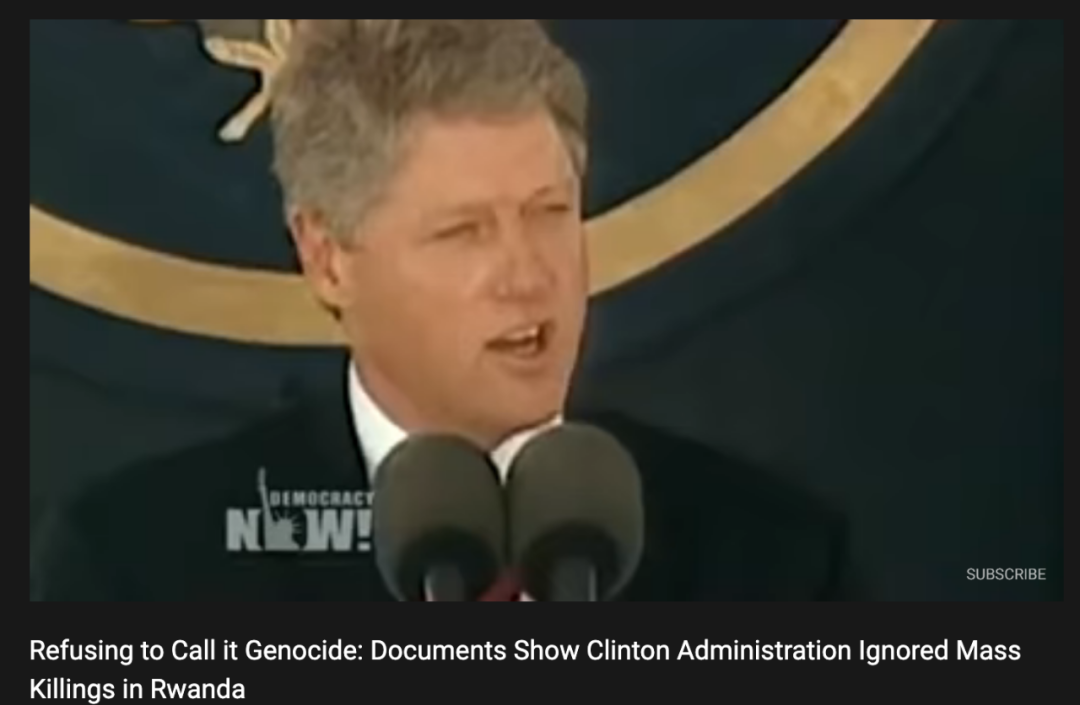
France established a field hospital near Lake Kivu to try to accommodate refugees. Canada, Israel, the Netherlands and Ireland also provided some assistance. International rescue organizations such as the Red Cross and Doctors Without Borders were not afraid of artillery fire and reached the local area to save the civilians. Before the massacre, the ICRC called on all parties concerned to do everything possible to prevent it, and to remain neutral during the massacre by setting up hospitals, delivering supplies and reducing civilian casualties.
On April 7, 2014, Rwanda commemorated the 20th anniversary of the Holocaust. United Nations Secretary-General Ban Ki-moon and leaders of several African countries attended the commemorative activities. France on Saturday decided to cancel its participation in the 20th anniversary of the Rwandan genocide after Rwandan President Paul Kagame again accused it of being "involved" in the 1994 genocide that killed 800,000 people.
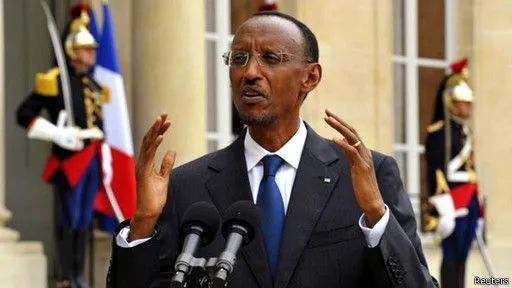
On May 16, 2020, Kabuja, the main suspect of the Rwandan genocide, was recently arrested in France after 26 years on the run. The United States once offered a reward of $5 million for the capture of Kabuja, who lived under a false identity in Agnières, a small town near Paris, before being arrested by the French police.
On May 22, 2020, Augustin Bizimana, the prime suspect in the Rwandan genocide, died about 20 years ago, according to the International Criminal Court (MICT) quoted by AFP.
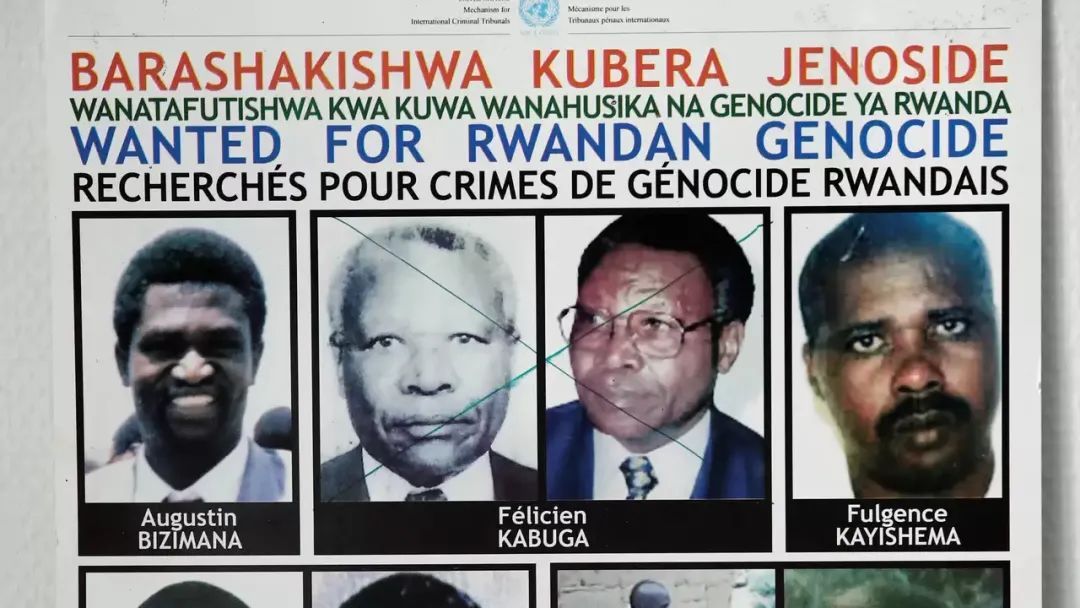
In August 2020, survivors of the Rwandan genocide launched an online petition to ask a French publishing house to stop publishing In Praise of Blood. Because the book denies the facts of the Holocaust. The French version of this book is written by Canadian author Judi Rever and is expected to be published by the French Max Milo publishing house at the end of August 2020.
On May 27, 2021, French President Emmanuel Macron admitted in the Rwandan capital Kigali that France was responsible for the Rwandan genocide in 1994.
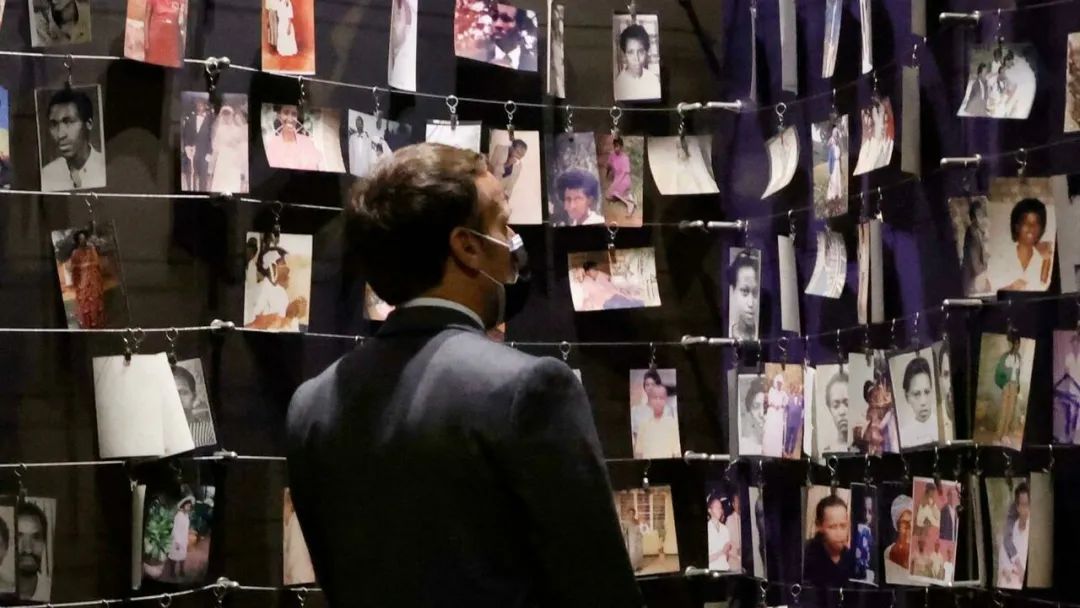
French responsibility
In 2004, the Rwandan government commissioned an independent commission of inquiry to investigate France's conduct during the massacre and its links to the entire tragedy. The Commission issued a 485-page investigative report in 2008, the year of publication to the world, against France: Mucyo report-the role of France in the 1994 Rwandan Genocide.
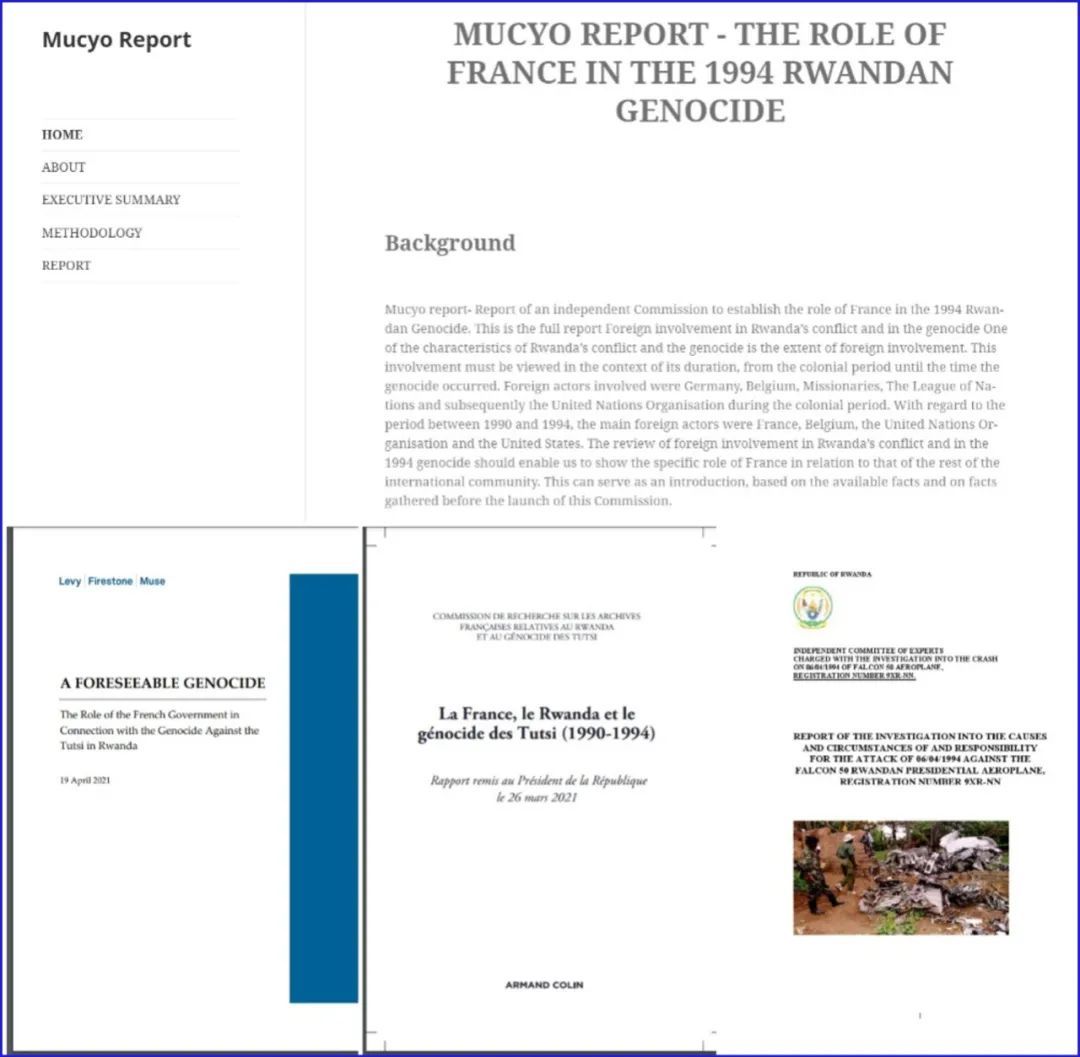
A cursory reading of the report reveals that all the accusations in it point to France, including "planning and participating in the massacre", "receiving a butcher as a friend in Paris", "providing military and material assistance", "helping the killer escape abroad" and so on. In particular, France is to blame for the fact that the Hutu militias trained by the French side have become "blade of the Holocaust". The report accused 33 French people of participating in the massacre, including the late former French President Mitterrand, former Prime Minister Baradil and De Villepin, former Foreign Minister Juppé and other dignitaries. Next, an interlude is adopted for the historical facts before the massacre, mainly stating the actions of the French government at the time of the massacre.
From 1990 to 1993, the French army was training local military police in Rwanda according to an agreement to protect the safety of Westerners. This "military umbrella" not only assisted the Hutu president to resist the offensive of the Tutsi anti-government army "Rwanda Patriotic Front", but also trained Hutu militias and "facilitated the massacre of the Tutsi". From 1962 to August 1993, France provided Rwanda with a total of 283.13 million US dollars in aid, 36.55 million US dollars in grants, and 14.17 million US dollars in debt relief to Rwanda. President Habyarimana has visited France 9 times, and French Presidents Destin and Mitterrand have both visited Rwanda. In 1990, when the civil war in Rwanda began, France publicly supported the Hutu government in Rwanda, providing military spending of more than 100 million US dollars, which made the Rwandan government army triple its army in just 3 months and obtained a large amount of arms.
France did nothing after the massacre. "Operation Turquoise" did not begin until the end of June, when 25,000 French intervention troops on a mission moved into western Rwanda to designate the area around Gikongoro, which accounts for about one-fifth of Rwanda's area, as a "humanitarian peace zone", prohibiting Any armed forces enter. However, the French special forces who arrived in Rwanda to "maintain local stability", provide "humanitarian assistance" and protect "all threatened populations" turned a blind eye to the atrocities of the Hutu army and even ruthlessly fled to their own camps. The Western refugees were turned away and allowed to be tortured and killed.
After the massacre in 1994, the patriotic front line in Rwanda broke down the government army and took control of the whole country. Since then, the relationship between the two countries has been in a cold state.

The reason for the slow response of the United States
The Bosnian war in the Balkans attracted the attention of the United States. Clinton has been actively involved in the civil war in Bosnia and Herzegovina since he came to power, not only bypassing the "Dayton Agreement" of the United Nations organization, but even setting up a condolence force of 310,000 people in Bosnia and Herzegovina in 1996.
Operation Restore Hope, a U.S. operation in Somalia on behalf of the United Nations, ultimately cost $2.5 billion and failed, especially in Mogadishu. In October 1993, in the name of humanitarian intervention, then U.S. President Bill Clinton dispatched elite U.S. troops to capture Somalia's largest armed leader, but failed due to intelligence errors. During the battle, two Black Hawk fighters were shot down and one was shot down. A U.S. soldier was killed, and his body was dragged by militants to the street. After the tragedy was broadcast on CNN, the American people scolded Clinton. This led the Creighton administration to see it as a failed operation, and it was unanimously criticized by Congress. The "shadow of Somalia" shrouded the U.S. military, making it difficult to easily intervene in the Rwanda incident.
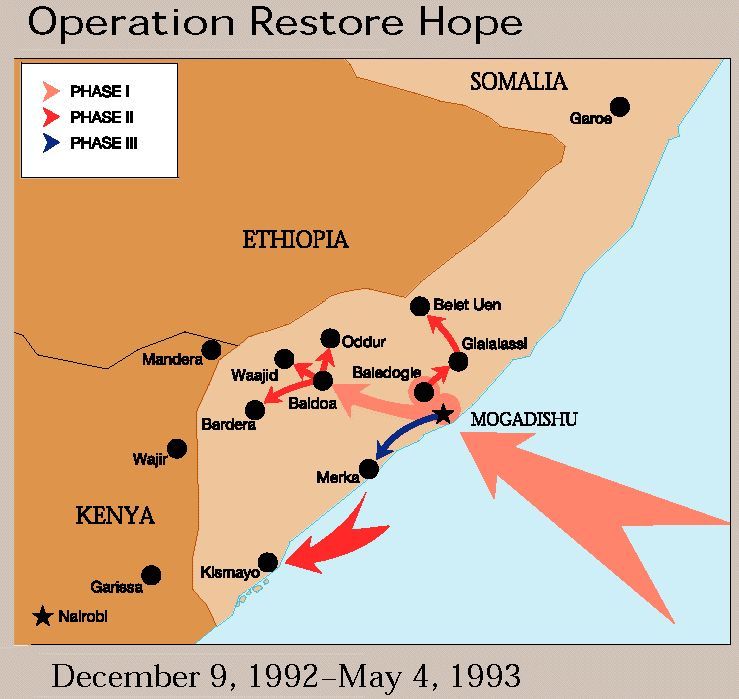
Rwanda has a low international status and is geographically remote. After the drastic changes in the Soviet Union and East Asia in the 1980s and 1990s, the status of the whole of Africa in US foreign policy declined sharply. Therefore, the United States has taken a low-key approach to what happened in Rwanda.
The rise of "The New Isolationism" in the United States. Neo-isolationism will rise when the U.S. economy is in recession. It advocates that "America is everything, everything is the United States. It opposes sending troops overseas, opposes foreign economic aid, opposes massive immigration to the United States, advocates trade protectionism, and emphasizes everything. All have to "prioritize the interests of the United States."

Reasons for the UN's slow response
Charter limitations. On the one hand, the Charter of the United Nations makes it one of its purposes to "promote and encourage respect for human rights and fundamental freedoms for all without distinction as to race, sex, language or religion", but it also clearly states that nothing in the Charter shall Authorizes the United Nations to intervene in matters that are essentially the domestic jurisdiction of any country. These constraints restrict the UN's intervention in ethnic conflict in its member states, and peacekeepers have no first-hand power to use force.
Limitations of peacekeeping mechanisms. UN forces, Western armies in third world countries cannot be the first to shoot, only self-defense. Those Rwandans armed with machetes, sticks and AK47s were civilians before the weapons fell, and they were still civilians after the weapons fell. If peacekeepers want to stop such atrocities, they will cause such "civilian" casualties, such civilians. Casualties will be condemned by world public opinion. Such "procedural justice" cannot face sudden humanitarian disasters.
At that time, the military dictatorship of Rwanda that planned and carried out the massacre was itself a member of the UN Security Council, and its supporters such as France and Djibouti were also members of the Security Council. They themselves denied the massacre.

China's reaction
China is relatively mediocre among them. In the 1994 UN vote on peacekeeping, China abstained from voting on Resolutions 929 and 955, and all others voted in favor.
Resolution 929 is a "turquoise" plan for humanitarian peace. Ambassador Chen Jian, Permanent Representative of China to the United Nations, said in an explanation of the Security Council's vote on the resolution: "We have always maintained that respecting the opinions of relevant countries and regional organizations and obtaining cooperation from all parties to the conflict are essential for the success of UN peacekeeping operations. The Chinese delegation abstained from voting on the draft resolution before us, taking into account the lessons learned from the UN peacekeeping operations in Somalia.”
Resolution 955 established a criminal court for Rwanda to try Rwandan citizens responsible for the massacre. Ambassador Li Zhaoxing said in the Security Council's explanation of the vote: "Under the current circumstances, it is not prudent enough for the Security Council to rush to a vote on the resolution and the draft statute of the Tribunal that the Rwandan government cannot accept, and it will have an impact on the future work. It is also difficult to predict, and the Chinese delegation cannot but express regret and abstain from voting.”
China and France were the main suppliers of arms to the Rwandan government before the massacre, which became the reason for later criticism.
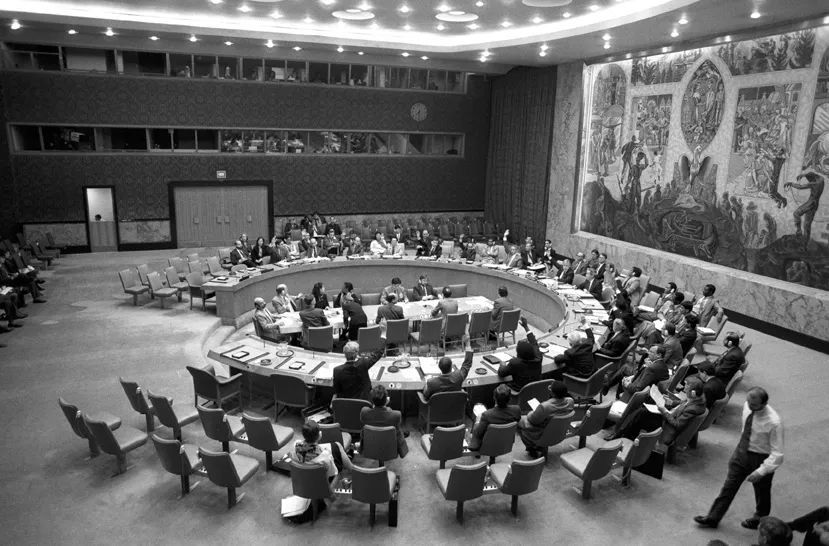
trial
The United Nations established the International Criminal Tribunal for Rwanda in Arusha, Tanzania, to try senior government officials or soldiers, while the Rwandan government itself was responsible for trying lower-level leaders or civilians. Under a law passed by the Rwandan government, an independent commission of inquiry was established in 2004 to investigate France's role in the massacre. In November 2006, the French Ministry of Defense agreed to declassify more than a hundred classified documents related to the Holocaust.
On December 23, 2003, the United Nations General Assembly proclaimed April 7 every year as the "International Day of Reflection on the Rwandan Genocide". In January 2019, the United Nations General Assembly passed a resolution to change the official name of Rwanda Genocide Remembrance Day to "International Day of Reflection on the 1994 Rwandan Genocide against the Tutsi".
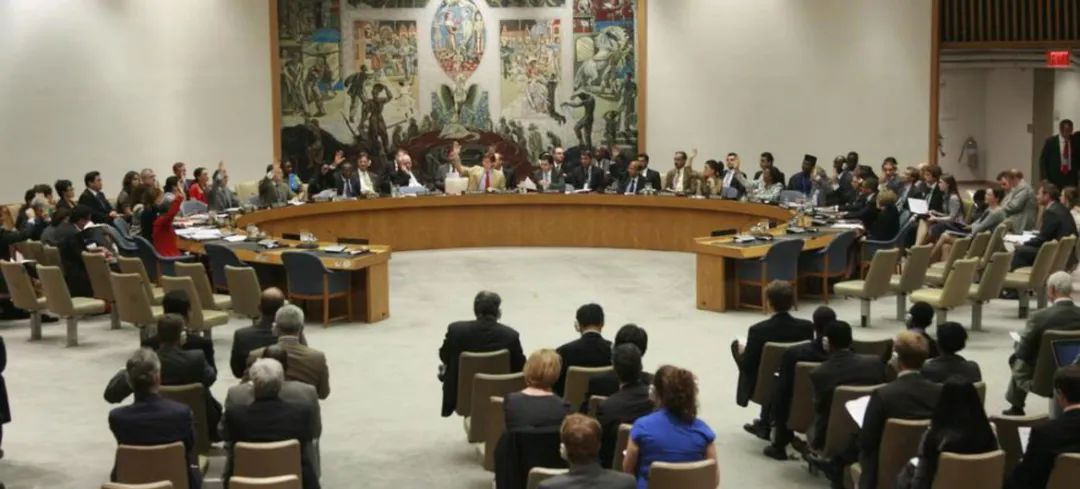
The United Nations' follow-up R2P program
At the time of the massacre, Kofi Annan, who was later secretary-general, was in charge of peacekeeping within the United Nations. Facing the scene of the tragedy, he vowed "never again". On New Year's Day 1997, Annan came to serve as Secretary-General of the United Nations. Driven by him and others, a new concept called R2P (Responsibility to Protect) began to circulate in international political circles. That is, the government has the responsibility to protect civilians. If a government cannot do it, the international community can take action. .
In 2002, African countries held a summit in Durban, South Africa, to formally establish the African Union. Having accepted the lessons of the Rwandan genocide, the alliance adopted a document stating that the alliance has the responsibility to intervene if a member state allows its people to suffer crimes against humanity. The AU became the first regional organization to incorporate R2P into its guiding principles.
Subsequently, in September 2005, at the summit meeting of the 60th anniversary of the founding of the United Nations, the General Assembly communiqué adopted by 180 heads of state without objection formally stipulated the basic principles of R2P within the framework of the United Nations.
In the order of the original English text, the five conditions are listed below.
(1) It must be a collective action, not a single country acting against another country, to avoid the suspicion of aggression.
(2) It must be authorized by the Security Council.
(3) Neighboring countries most likely to be affected by military action (such as refugees crossing borders) must be willing to cooperate.
(4) Peaceful means have been tried and ineffective.
(5) The government of a country clearly exposes the population to the threat of crimes against humanity.
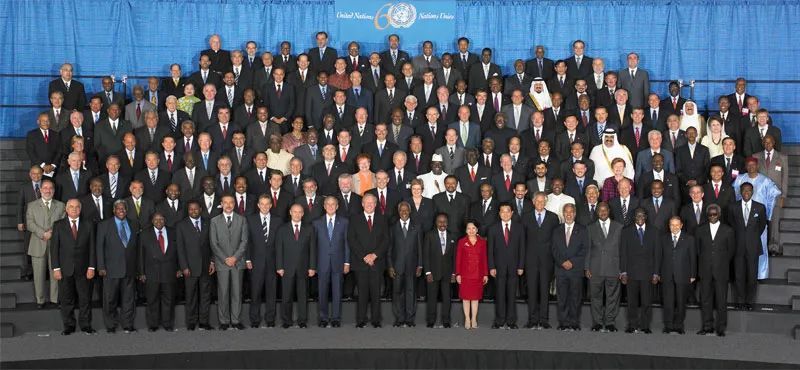
Memorial Day
Rwanda has two holidays each year to commemorate the victims of the Rwandan genocide. In 2019, the Rwandan government marked 100 days of mourning to mark the 25th anniversary of the genocide, lighting a flame at the Kigali Genocide Memorial.

memorial
Since 1995, there have been genocide memorials in many parts of Rwanda, with a total of six memorials. During National Week of Remembrance (the week in April), new memorial sites are established and existing memorial sites are used for collective mourning and commemoration. The Rwandan State has concentrated its work on seven such institutions. With the help of foreign partners, they are expanded and nurtured as places of mourning, memory, reflection, communication, learning and prevention.
A central museum of this type, the Kigali Genocide Memorial, opened in the Rwandan capital in 2004. Community graves at the facility hold the remains of about 250,000 people. Part of the facility is the National Genocide Documentation Center. About 200 regional and local sites have been added to seven central memorials, including the Murabi Genocide Memorial. They are located where large numbers of people were murdered during the genocide.
The memorial is designed with a political and debate purpose. In many cases, hundreds of bones are intentionally shown. They are substantial evidence of widespread violence. It makes genocide denial and trivialization much more difficult in this way.

References
- France withdraws from Rwanda genocide commemoration
- What was the international response to the Rwandan genocide?
- Rwanda genocide
- 1 million people were killed in 100 days, 500,000 women were raped, and the main perpetrator of the Rwanda genocide in Africa was arrested
- Rwanda genocide
- Rwanda and Douma
- Macron recognises France's responsibility in Rwandan genocide, asks for forgiveness
The graves are not yet full. — RTLM Radio
Like my work? Don't forget to support and clap, let me know that you are with me on the road of creation. Keep this enthusiasm together!

- Author
- More